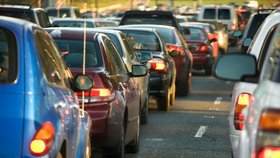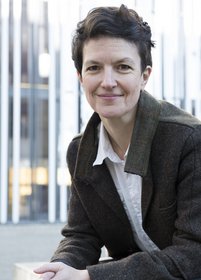Mobility transition in Hamburg
“In the end, it’s all about human protection"
20.01.2023

Wide bike lanes, punctual trains, more electric buses. This is how many people envision the sustainable transport of tomorrow. We talked to Dr. Philine Gaffron, senior engineer at the Institute for Transport Planning and Logistics at Hamburg University of Technology, about what measures Hamburg should take and what role the right communication plays in this.
The mobility of the future should be sustainable. How far along is Hamburg compared to other cities?
Various aspects play a role here - such as livable public space. In Hamburg, however, the number of cars is increasing, and more than proportionally to population growth. We are not alone in this, but in Berlin, for example, the density of cars is much lower. And there, more journeys are made by local public transport (ÖPNV). Another aspect is social participation: Hamburg is repeatedly criticized for its excessively high social fares for public transportation. Here, too, a comparison with Berlin shows that things can be different. At the moment, there is a 29-euro ticket, but in the future there will again be a 9-euro ticket for recipients of basic social security benefits. And, of course, climate protection is a key issue. According to Hamburg's climate plan, CO2 emissions are to be reduced by 70 percent by 2030. To achieve this, however, much more needs to be done than has been the case to date.
Hamburg is to be established as a "metropolitan model region for mobility". This also involves the digitization of traffic and autonomous driving. How do you rate these measures?

Autonomous driving is like electromobility - it's a tool that you use to achieve certain goals. Autonomous commuter trains and subways, for example, can enable denser service and also be useful in view of the shortage of skilled driving personnel. On the other hand, studies show that many passengers feel safer with train crews present. So technically feasible and sensible does not automatically mean more socially acceptable.
Besides digitization, what else needs to be done to make mobility in Hamburg fit for the future?
Measures are needed to cut back on motorized private transport: a redistribution of road space that creates more space for pedestrian and bicycle traffic, for public transport, for public life and encounters, as well as for street greenery and water areas. For example, parking spaces would have to make way for this. If cars are parked for an average of 23 hours a day, this is complete nonsense from an economic point of view. The city has a responsibility here to change the framework conditions for mobility decisions. This ranges from 30 km/h speed limits and access restrictions for combustion engines to parking fees that encourage behavior. Safe, attractive options for walking, cycling and public transport and the reduction of motorized private transport are therefore two sides of the same coin - you can't have one without the other.
Let's imagine we were in a perfect world: What would traffic in Hamburg look like in your opinion?
My target image is affordable, safe, healthy mobility for everyone that is suitable for everyday use, and sustainable commercial transport. The transport system should enable a quality life and a stable circular economy that does not exceed Hamburg's share of planetary resources. It is also important to me that we use honest and clear communication to break down the often hardened fronts between different interest groups. The big goal may always be climate protection, but ultimately it's about protecting people. It should be in everyone's interest that we continue to live our lives in good shape.
A communication event will also be held next week at Hamburg University of Technology. What will it be about?
At "Mobility transition - perspectives and innovations for Hamburg's south," we want to talk about mobility in Hamburg, especially in Harburg, with Transport Senator Dr. Anjes Tjarks, among others. In addition, my colleagues will introduce the KoGoMo project, which is about introducing new mobility services, and present the autonomous transport robot Laura.
What? "Mobility transition - perspectives and innovations for Hamburg's south".
When? January 26, 2023 from 5 to 7 p.m.
Where? TU Hamburg, Audimax II, Denickestr. 22.
Registration until 23.01.2023 at https://intranet.tuhh.de/anmeldung/mobilitaetswende
TUHH - Public Relations Office







